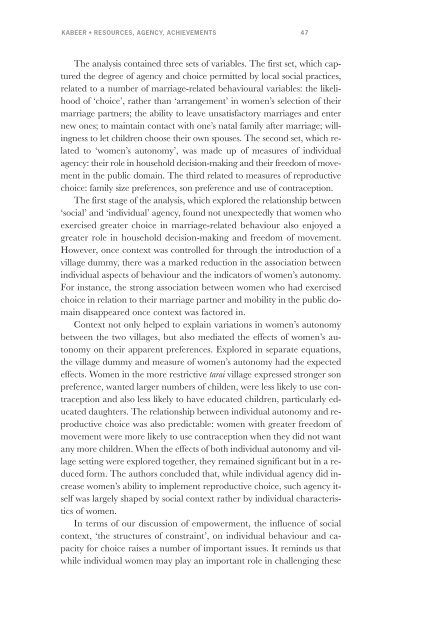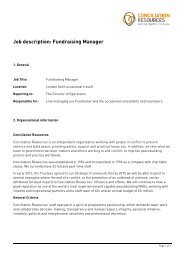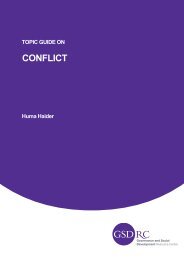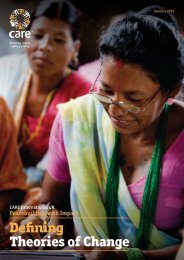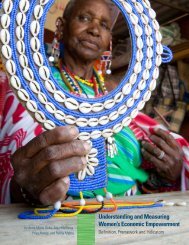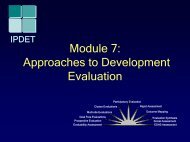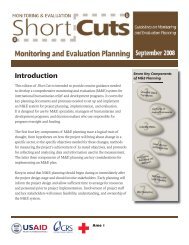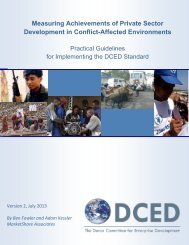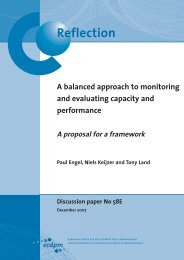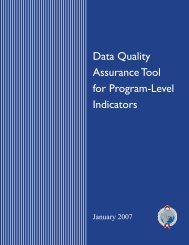Discussing Women's Empowerment - Sida
Discussing Women's Empowerment - Sida
Discussing Women's Empowerment - Sida
You also want an ePaper? Increase the reach of your titles
YUMPU automatically turns print PDFs into web optimized ePapers that Google loves.
KABEER • RESOURCES, AGENCY, ACHIEVEMENTS 47<br />
The analysis contained three sets of variables. The first set, which captured<br />
the degree of agency and choice permitted by local social practices,<br />
related to a number of marriage-related behavioural variables: the likelihood<br />
of ‘choice’, rather than ‘arrangement’ in women’s selection of their<br />
marriage partners; the ability to leave unsatisfactory marriages and enter<br />
new ones; to maintain contact with one’s natal family after marriage; willingness<br />
to let children choose their own spouses. The second set, which related<br />
to ‘women’s autonomy’, was made up of measures of individual<br />
agency: their role in household decision-making and their freedom of movement<br />
in the public domain. The third related to measures of reproductive<br />
choice: family size preferences, son preference and use of contraception.<br />
The first stage of the analysis, which explored the relationship between<br />
‘social’ and ‘individual’ agency, found not unexpectedly that women who<br />
exercised greater choice in marriage-related behaviour also enjoyed a<br />
greater role in household decision-making and freedom of movement.<br />
However, once context was controlled for through the introduction of a<br />
village dummy, there was a marked reduction in the association between<br />
individual aspects of behaviour and the indicators of women’s autonomy.<br />
For instance, the strong association between women who had exercised<br />
choice in relation to their marriage partner and mobility in the public domain<br />
disappeared once context was factored in.<br />
Context not only helped to explain variations in women’s autonomy<br />
between the two villages, but also mediated the effects of women’s autonomy<br />
on their apparent preferences. Explored in separate equations,<br />
the village dummy and measure of women’s autonomy had the expected<br />
effects. Women in the more restrictive tarai village expressed stronger son<br />
preference, wanted larger numbers of childen, were less likely to use contraception<br />
and also less likely to have educated children, particularly educated<br />
daughters. The relationship between individual autonomy and reproductive<br />
choice was also predictable: women with greater freedom of<br />
movement were more likely to use contraception when they did not want<br />
any more children. When the effects of both individual autonomy and village<br />
setting were explored together, they remained significant but in a reduced<br />
form. The authors concluded that, while individual agency did increase<br />
women’s ability to implement reproductive choice, such agency itself<br />
was largely shaped by social context rather by individual characteristics<br />
of women.<br />
In terms of our discussion of empowerment, the influence of social<br />
context, ‘the structures of constraint’, on individual behaviour and capacity<br />
for choice raises a number of important issues. It reminds us that<br />
while individual women may play an important role in challenging these


